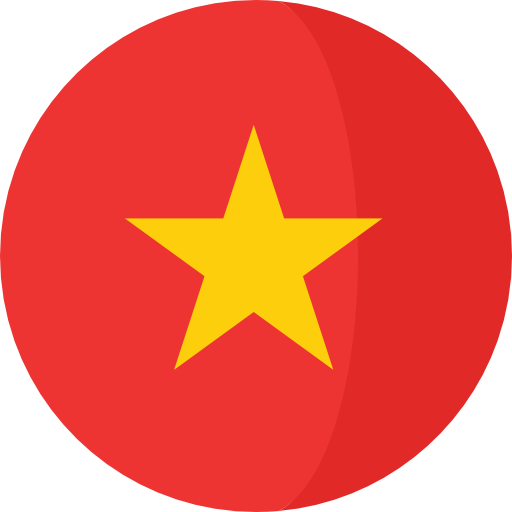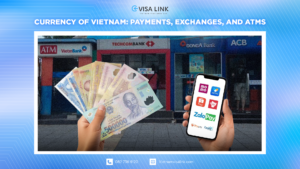When planning a trip to Vietnam, understanding the local currency and how to manage your finances is essential for a hassle-free experience. Whether you’re strolling through bustling markets, dining at local eateries, or exploring the country’s stunning landscapes, knowing how to handle Vietnamese Dong, where to exchange money, and the best ways to access cash can significantly enhance your journey. In this blog, we’ll break down everything you need to know about payments, currency exchange, and ATMs in Vietnam, ensuring you’re well-prepared to navigate the financial aspects of your trip with confidence.
An Overview of the Vietnamese Dong
The official currency of Vietnam is the Vietnamese Dong, abbreviated as VND. Banknotes come in a variety of denominations, ranging from 1,000 VND to 500,000 VND. The notes are distinct in color and size, making it easy to differentiate between them.
It’s important to note that while USD is widely accepted in tourist areas, particularly tourist hotspots and high-end hotels, the VND is the primary currency for all transactions. To get the best value and avoid confusion, it’s recommended to use the local currency whenever possible.
Payment Methods in Vietnam
Cash
Cash is king in Vietnam, especially in rural areas and smaller towns where credit cards may not be accepted. Most transactions, from dining at local restaurants to shopping in markets, are conducted in cash. Make sure to carry smaller denominations for everyday purchases.
Credit and Debit Cards
In urban areas and tourist hotspots, credit and debit cards are widely accepted in hotels, larger restaurants, and shopping centers. Visa and Mastercard are the most commonly accepted cards, while American Express and other cards may be less so. However, always check for any additional fees that might be charged for card payments, and remember that smaller establishments may not accept cards at all.
Mobile Payments
Mobile payment systems are gaining popularity in Vietnam, particularly in cities like Hanoi and Ho Chi Minh City. Apps like MoMo and ZaloPay allow users to pay for services such as food delivery, taxis, and online shopping. While convenient, these apps typically require a Vietnamese bank account, making them less accessible to short-term visitors.
Exchanging Currency in Vietnam
Banks
Banks in Vietnam offer secure currency exchange services with competitive rates. Major banks like Vietcombank, BIDV, and Techcombank have branches in cities and towns across the country. Remember to bring your passport when exchanging money at a bank, as identification is required for the transaction.
Currency Exchange Offices
In addition to banks, there are numerous licensed currency exchange offices, particularly in tourist areas. These offices can offer competitive rates, but it’s always a good idea to compare rates before exchanging large amounts of money.
Hotels and Airports
While convenient, exchanging money at hotels and airports usually comes with lower exchange rates compared to banks and exchange offices. It’s advisable to only exchange small amounts at these locations to cover immediate expenses.
Avoid Black Market Exchanges
Although black market currency exchange might offer tempting rates, it’s illegal and carries significant risks. Counterfeit money and scams are common, so it’s best to stick with official exchange venues.
Using ATMs in Vietnam
ATMs are widely available throughout Vietnam, especially in cities and tourist areas. Most ATMs accept international cards, and you can withdraw cash. However, be aware of the following:
– ATM Fees: Fees for withdrawing cash from ATMs vary depending on the bank and your card issuer. These fees can add up, especially if you make multiple withdrawals, so it’s a good idea to withdraw larger amounts to minimize fees.
– Daily Withdrawal Limits: Most ATMs in Vietnam have a daily withdrawal limit, typically ranging from 5,000,000 VND to 50,000,000 VND. This limit may be lower for foreign cards, so plan accordingly.
– Security: Always use ATMs located in secure areas, such as inside banks or shopping malls. Be cautious of your surroundings and cover the keypad when entering your PIN.
– Network Availability: ATMs connected to international networks like Visa, Mastercard, and Cirrus are common in urban areas, but may be harder to find in rural regions. If you’re traveling to remote areas, it’s wise to withdraw cash in advance.
Tips for Managing Currency in Vietnam
- Carry Cash: Always keep some cash on hand, especially when traveling outside major cities.
- Check Your Change: Always double-check the change you receive to avoid confusion, especially with similar-looking banknotes.
- Use a Currency Converter App: Download a currency converter app to keep track of exchange rates and ensure you’re getting a fair deal.
Conclusion
Understanding the currency and payment systems in Vietnam will help you navigate your travels with ease. Whether you’re exploring bustling cities or serene rural landscapes, having the right knowledge about currency exchange, payment methods, and ATM usage will ensure you’re prepared for any situation.
For more information on traveling to Vietnam, including visa services, be sure to visit Vietnam Visa Link. We’re here to help make your journey as smooth and enjoyable as possible!


